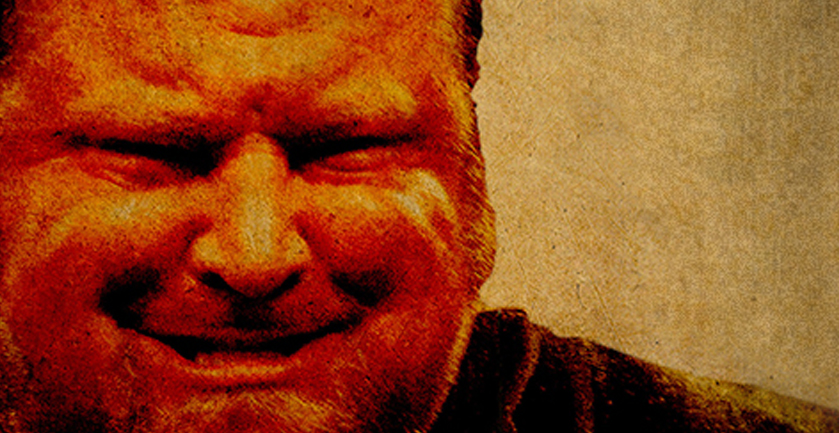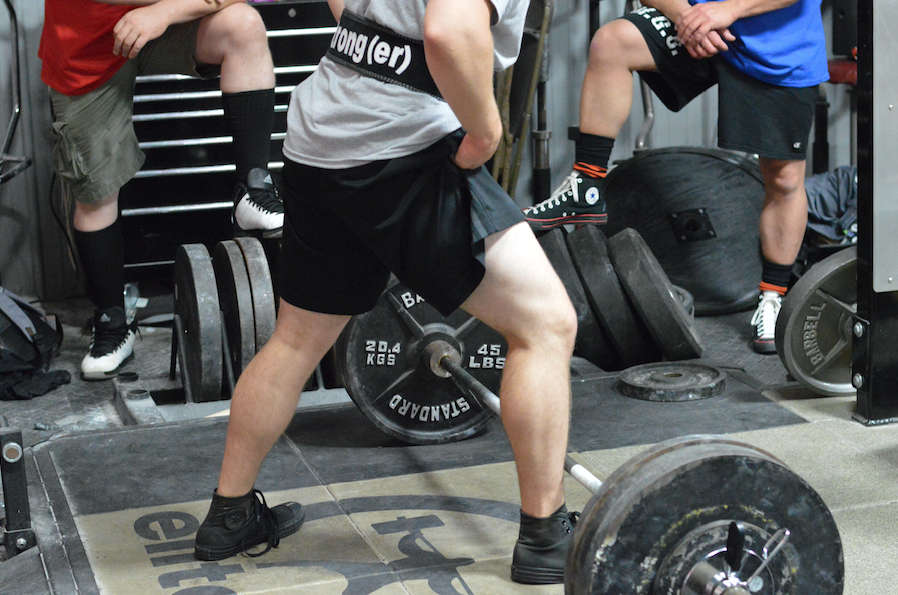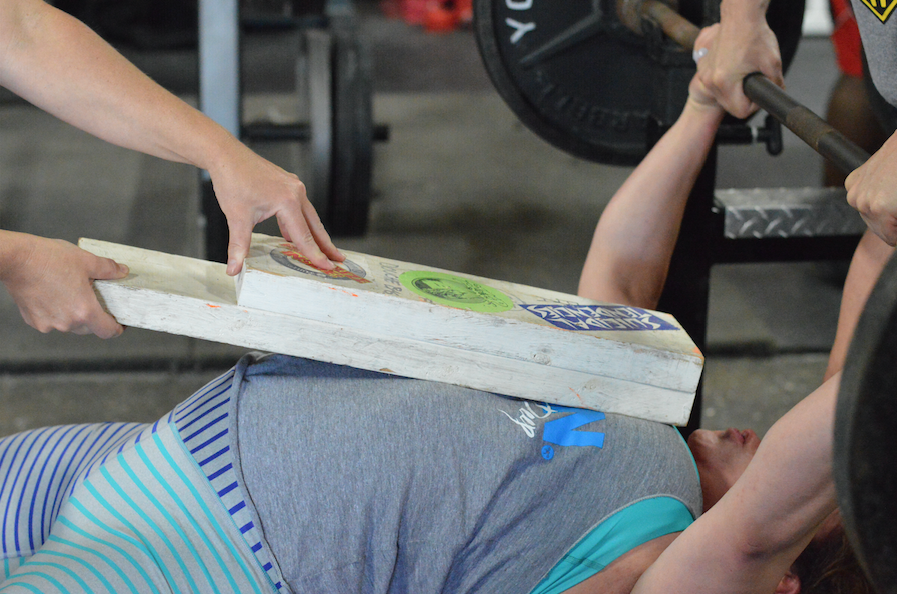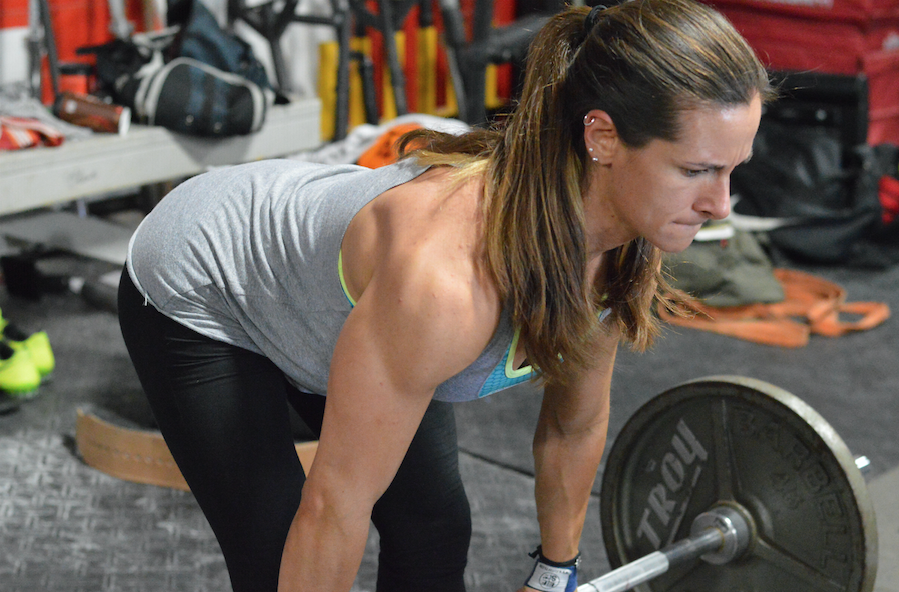
When it comes to sticking points and how to fix them, I've heard all sorts of advice over the years. As usual, much of this advice comes from novice lifters who spend years lifting the same weights, and needless to say, there is a lot of crap and crazy ideas out there. Lifters need to use their own logic and intelligence when approaching these issues so that they can get past them quickly and move on to hitting new personal records. Of course, I've always tried to keep things simple, and when it comes to sticking points, I stay with that same plan. I just try to break the problem down into the simplest equation and then build back up from there.
The very first question I always ask when I have a sticking point is, “How is my technique?” This can be a difficult question because most lifters don't have any idea what correct technique is and it can be hard to judge yourself. The best solution for this is to ask someone who is very knowledgeable about technique to watch your lift. If a lifter does really understand good technique, he can record himself from different angles to check it as well. I've found poor technique to be the most common cause of sticking points. With little corrections to your form, the sticking point usually disappears. Correct technique puts the body in the strongest position to complete the lift and allows you to perform the movement efficiently. No matter how good we think our technique is, we are still human and we can develop bad habits over time, so this is always the best place to start. We also need to be continuously working on technique in order to avoid sticking points or at least make it easier to assess them.
If there is a problem with technique, the lifter needs to figure out why. Technique errors can arise from a lack of understanding of proper technique, a lack of concentration or a muscle weakness. If a lifter has a knowledgeable athlete watch his technique and that lifter finds something being done incorrectly, then it's just a matter of correcting those things. This usually is simply a matter of repetition, concentration and time to fix it. If a lifter realizes that he has incorrect technique on a lift but usually does it correctly, then he probably just needs to focus and work on keeping himself in the proper groove.
RECENT: 'Tis the Season: The Pros and Cons of Being Huge
There are so many things to think about when performing a lift correctly. It's common to forget one or two small things sometimes. For instance, I may have an issue with my back rounding when I come out of the hole in a squat. Some lifters may jump to conclusions and assume that I have a weak low back when I'm simply not focusing on my technique enough. Maybe I'm not firing up with my low back because I'm not sitting back enough or bending forward enough. I may not be staying tight enough on the way down or maybe I'm not flexing my lats enough to help keep my arch. I could also not be getting enough air, so I'm not pushing my abs out hard enough. Once I figure out what it is, I can focus more on it and the problem is usually fixed immediately.
I once had someone critique one of my training partner's bench press. This person said that he was weak in some area (I can’t remember exactly what she said...maybe lat weakness). With frustration, I said, "He's just not staying tight" and I yelled at him to stay tight. Well guess what? His technique on the bench was fixed. I'm a miracle worker!
Sometimes technique errors are actually caused by a weak muscle group. Instead of staying in the correct technical groove, the body tries to shift the weight to a stronger muscle group. Yes, this will get the lift done but not as efficiently or as strongly as it could if the weak muscle group is strengthened so that the lifter can stay in the groove with the best technique. For example, a lifter may bench with his elbows flared out even when he knows proper technique and is working hard to stay in the right groove. The correct position is closer to 45 degrees for raw and fully tucked in for shirted. The lifter is unable to keep in the proper technical groove because of a muscle weakness, not because he doesn't know or isn't concentrating enough. This lifter needs to strengthen his lats and probably the inner head of his triceps, too. Once these muscles are strengthened, he'll be able to press in the proper groove and his bench will most likely make a huge jump.
Once technique has been ruled out as the cause of the sticking point, the lifter then has to look at muscle weakness. We are only as strong as our weakest link and even the smallest muscle groups can cause us to fail at a lift. The difficult part about this is actually figuring out the muscle group that is the weak link. In order to do this, the lifter must understand technique as well as anatomy and physiology of the body. I would like to think that most lifters already have at least a basic understanding of human musculature and how the muscles move the body. If a lifter performs a lift using proper technique and continually gets stuck in the same place, it should be pretty easy to know where the musculature weakness is. Then it’s just a matter of getting that or those muscles stronger. I use a modified conjugate/Westside style, so I'll pick max effort exercises that work the weak muscle and also do the same with my supplemental exercises. When proper technique is understood and executed, it's very easy to diagnose and fix sticking points.
One of the most common mistakes that I see lifters make is try and work the portion of the lift where they get stuck. For example, if they have trouble at the lockout in the deadlift, they do rack pulls. If they get stuck on the bench just off their chest, they do one- or two-board presses. I don't agree with this method, and although it may help some, it really doesn't fix the problem. If you're already failing at that point in the lift, how will working just that part of the lift help? Won't you just keep failing at it?
Too many times I've seen lifters work that portion of the lift with different technique. For instance, the lifter who has trouble locking out the deadlift probably has that problem because of poor technique. He's starting the lift incorrectly and ending up hunched over at the lockout. So the lifter decides to do rack pulls or pull the weight off blocks. What usually happens is he does these with good technique in an arched or even straight backed position. He probably ends up pulling more than he deadlifts, but when he goes back to the full deadlift, he ends up getting stuck in the same place. This is because he really didn’t fix the problem. He didn't have a muscle weakness to begin with. He had a technical weakness. Even if it was a muscle weakness, he wasn't working the muscle in the same technique. To fix the problem, he should be working his technique.
With the bencher, he may be getting stuck because of muscle weakness or technical weakness. Generally, in this case, the bencher will end up flaring the elbows and, just off his chest or belly, he'll get stuck. Then when he goes to a board press to work that sticking point, he probably does the same thing. The lifter can continue to work it like this and will probably increase his bench press some, but it still isn't fixing the problem. This most certainly won't allow him to reach his potential in that lift. The lifter should be working his lats and inner head of the triceps. He could do rows for his lats and four-board presses with his elbows in for the triceps (these are two of many exercises that he could do). Then he also needs to work on his technique, which is done while doing any bench movements and can be done with high rep light weight bench pressing with complete focus to make each rep perfect. I suppose that he could use the board to work that exact sticking point, but it would have to be for supplemental work for sets and reps while really focusing to use proper technique. I still believe that working the specific muscle group is the best and fastest way to fix a sticking point when it's caused by a musculature weakness.
Strength training is simple, but it isn't as simple as seeing a sticking point and just working that small area of the movement. Think of it like a problem with your car or how a mechanic would go about fixing a problem with your car. Let’s say that you have an older car. It doesn't have a computer that the mechanic can just plug in and find out what’s wrong. That would be awesome if we lifters had something like that though! You take your car to the shop and tell them what is wrong. This is something usually pretty vague like your car shimmies back and forth when driving. If the mechanic hears the shimmy, he would first try to pin down the system in the car causing the shimmy. It probably isn't the electrical system or the fuel system. It could be the suspension or steering mechanisms or possibly the tires. The mechanic may start with the steering mechanism because it seems most likely to cause this. He may start with tie rods and ball joints or whatever things are most likely to cause a shimmy. Everything checks out. He moves to suspension parts and still everything checks out. Then he moves on to the tires and then the wheel alignment, which shows that the wheel caster is off. A quick alignment and everything is good to go.
WATCH: Table Talk — Learning From Novice Mistakes
It's all about the process of elimination. Take one step at a time and go about it in a logical fashion. Keep in mind that the smallest things can actually have a big effect on performance. This is the same with lifting, and if you think about it, the human body is just another machine. First, we figure out the problem—we get stuck two inches off the chest. Then we need to figure out the cause and that is done by process of elimination starting with the most common. Is technique correct? Is there a muscle weakness? Is there some sort of injury or physical limitation? Once we have the cause, then we decide how to fix it. If it's technical, we need to learn correct technique and we need to strengthen that technique. We need to develop stronger neural pathways so that it becomes natural to us, and we need to work on our concentration and focus to maintain that technique. If it's a weakness, we need to come up with a plan to strengthen those weak muscles. Just break it all down to the simplest parts and build it up. This ability gets better and faster with experience just like an experienced mechanic will be much faster than a new one because, in most cases, they've seen it all before.
There are a couple more common things that I see when it comes to sticking points, such as staying tight and building pressure. I consider these part of proper technique but feel they're worth mentioning on their own because of their importance. I've fixed many sticking points in lifters by simply getting them to stay tight (similar to my earlier example about my training partner benching). When a lifter isn't tight and building pressure before the lift or in the eccentric phase of the lift, he has a greater chance of "misgrooving" the lift. Once the lifter switches to the concentric phase, he doesn't have the stability he needs to really fire up and takes the chance again of getting out of the right groove. For example, when a lifter descends in the squat and is loose, he has a greater chance of squatting down instead of back. Once he begins to fire up, he tends to shoot his butt up before his back if he's still loose.
Speed can also help sticking points. This can be more important for geared lifters, but it's still very important in raw lifters as well. With enough speed, a lifter can blast through sticking points, especially if those sticking points tend to be where there is a musculature transition. For example, in the bench press, a lifter switches from more lats at the bottom of the lift to more triceps at the top of the lift. In geared lifters, I've seen many lifters let the gear take the weight in the eccentric phase and then let the gear start the concentric phase. Then they'll get stuck and start to push too late in the lift. They still need to stay tight to really control the weight and then they need to explode from the beginning of the concentric phase, which will help them blast right through that sticking point.
No matter how hard I've tried to gain strength equally through all my muscle groups, I've never actually been able to accomplish it. I've always been chasing sticking points and/or weak muscle groups. I think this is just the nature of the beast. In order to keep gains coming as fast as possible, a lifter needs to be able to recognize sticking points quickly. Then he needs to figure out the cause of the sticking point and come up with a solid game plan to rectify it. He needs to take a logical approach to solving these problems and not just expect some random exercise to solve it.
There are so many possible causes for sticking points and they're so individual that a lifter won't just find the answers on the internet. He will actually have to think and learn for himself. I've said many times that the top lifters aren't just stupid muscle heads. They're very intelligent, at least in the realm of strength. Knowledge from top lifters or coaches can definitely help any lifter improve and learn, but in the long run, no one can know a lifter's body better than himself.














2 Comments